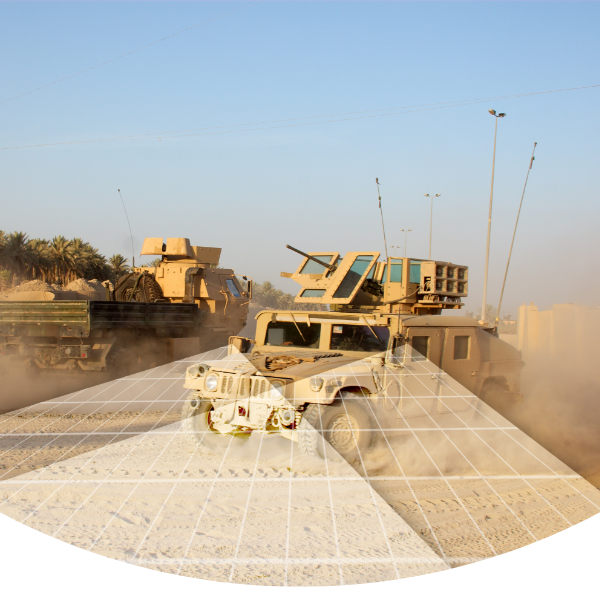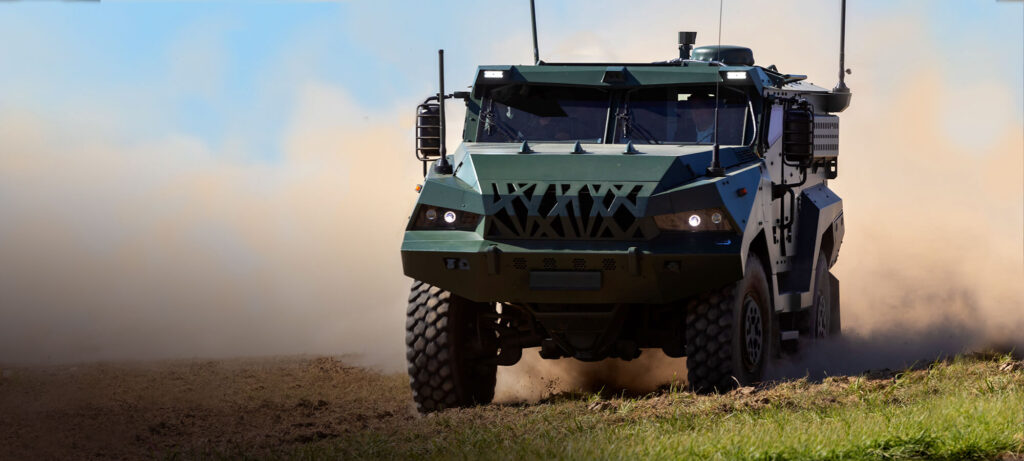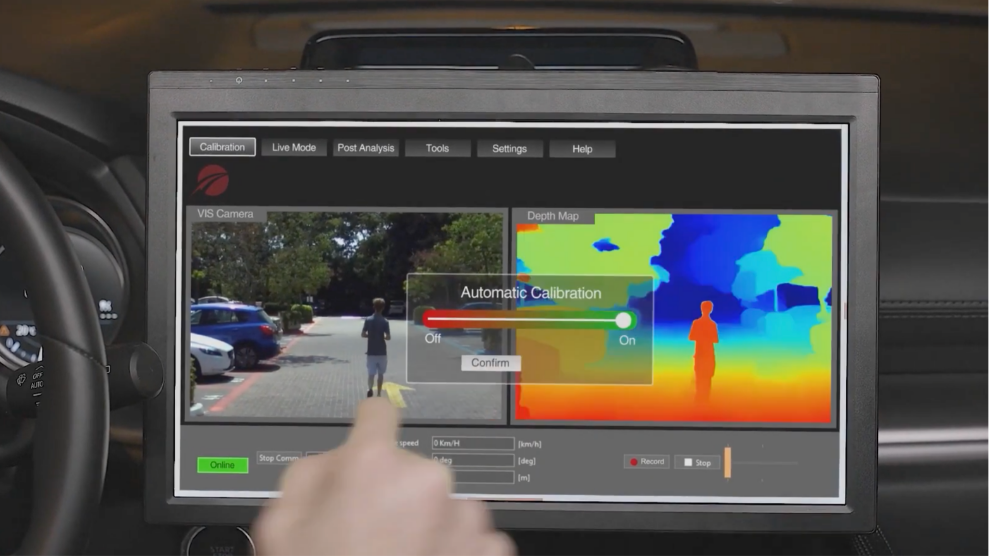Industries
Defense

Industries
Defense

Autonomous Defense Vehicles
The military sector has traditionally been ahead in the development of Autonomous Vehicle (AV) technology and has been experimenting in this area for decades. Autonomous vehicles offer many advantages on the battlefield. They act as force multipliers while reducing risk to soldiers by keeping them out of harm’s way. They are extremely useful for intelligence gathering, as well as for improving logistics delivery, freeing up army personnel for more strategic tasks. Autonomous vehicles can also serve in disaster relief missions and provide humanitarian assistance, such as providing supplies to remote locations and evacuating the wounded.
Passive Detection Technology
The main driver of AV technology from a military perspective has always been the safety of its personnel. By removing troops from the more high-risk environments and having autonomous vehicles carry our tasks like resupply or reconnaissance. This has become common in the aerial domain, with drones increasingly being utilized alongside piloted aircraft to increase safety for human crews.
Foresight’s sensors, allowing for passive detection, provide such vehicles with the ability to adapt to complex conflict zones and operate in the harshest environmental conditions, including off-road driving and zero-visibility sandstorms.

Solutions
Mono2Stereo™
Our proprietary software-based algorithms create a 3D perception stereo vision that upgrades and amplifies existing vision sensor systems’ performance without requiring new or additional hardware.
ScaleCam™
Our unique solution allows camera modules to be placed independently apart supporting large baselines without requiring any stringent mechanical constraints or manual calibration allowing higher accuracy at longer distances.
Percept3D™
Our point cloud provides 3D raw data that can be used for accurate obstacle detection, in-depth terrain analysis and autonomous vehicle sensor fusion.
QuadSight 2.0™
Our QuadSight multi-spectral vision solution allows for exceptionally accurate obstacle detection in harsh lighting and weather conditions.
DynamiCal™
Our Automatic Calibration technology uses a dedicated algorithm to assess relative pose estimation, providing an accurate stereoscopic 3D perception.
Request A Demo
Reach Out And Schedule A Demo
